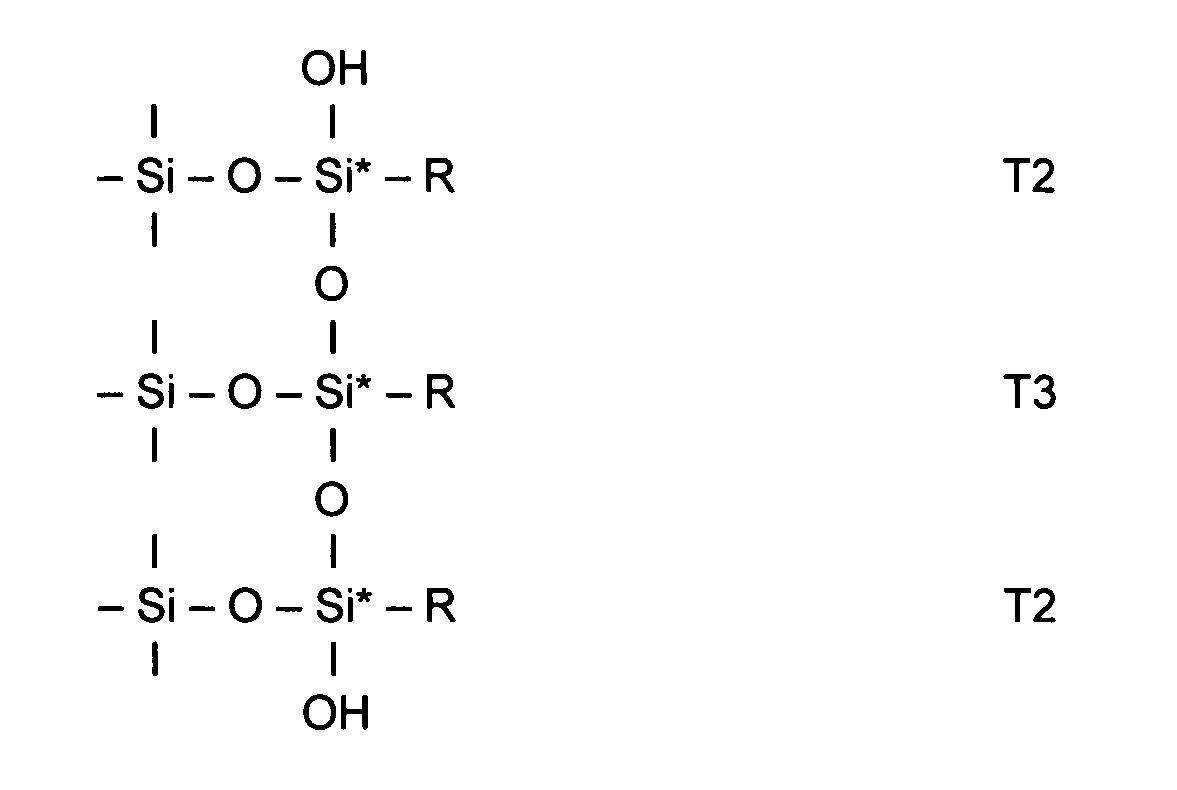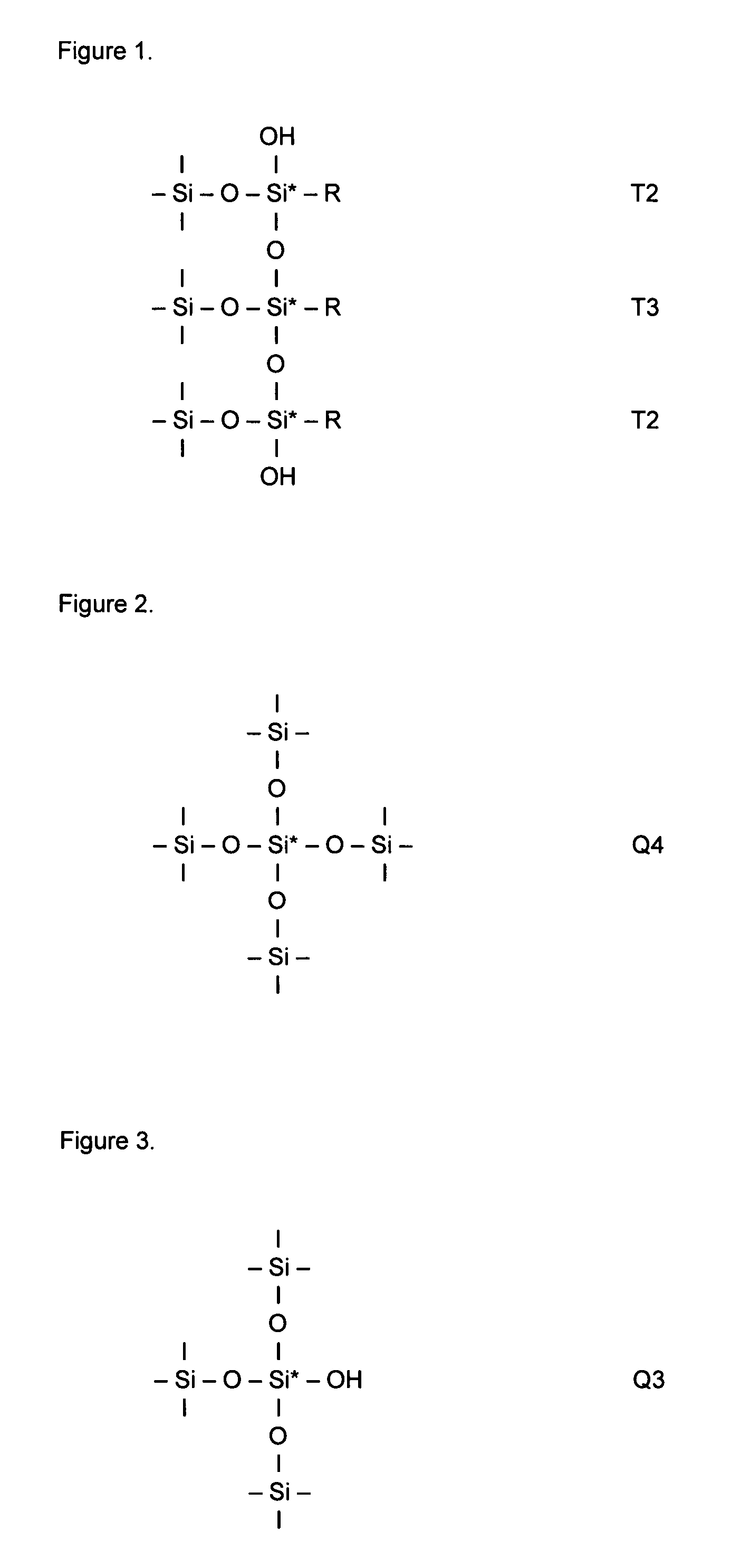Silica based material
a technology of organic silica and silica, which is applied in the direction of filtration separation, other chemical processes, separation processes, etc., can solve the problems of difficult to have all silanol groups react with the functionalising agent, difficult to achieve stable phase separation materials based on silica, and still chemically rather unstable at high ph, etc., to achieve the effect of specific surface area
- Summary
- Abstract
- Description
- Claims
- Application Information
AI Technical Summary
Benefits of technology
Problems solved by technology
Method used
Image
Examples
example 1
Preparation of an Organo-modified Silica Based Material
[0078] 21.50 mL methyltrimethoxysilane was added to 300 mL Milli-Q-water at room temperature. 30.00 g silica particles (Kromasil®), having an average particle size of 5 μm, an average pore size of 120 Å and a specific surface area of 320 m2 / g was added and the mixture was heated to 95° C. The temperature was kept for 3 h. The temperature was thereafter lowered to 80° C. whereby 21 mL 25% NH3(aq) was added. The temperature was kept for 2 h. Thereafter, the temperature was lowered to room temperature and 21 mL 65% HNO3(aq) was added. The mixture was heated to 95° C. and this temperature was kept for 88 h after which the mixture was filtered and washed with Milli-Q-water, THF and acetone. The material was finally dried at 90° C. for 4 h.
[0079] The carbon content was measured by elemental analysis to 3.9 weight %.
example 2
Preparation of an Organo-modified Silica Based Material
[0080] 40.5 mL (33-36) ethyltrimethoxysilane was added to 500 mL Milli-Q-water having 50 g silica particles (Kromasil® 100 Å), having an average particle size of 5 μm, an average pore size of 120 Å and a specific surface area of 320 m2 / g. The mixture was heated to 98° C. and the temperature was kept for 16 h. The temperature was cooled to below 40° C., filtered and washed with Milli-Q-water and acetone. The material was dried at 90° C. for 4 h.
[0081] The carbon content was measured by elemental analysis to 7.1 weight %.
example 3
Preparation of an Organo-modified Silica Based Material
[0082] The product of Example 2 was dispersed in Milli-Q-water and the mixture was put in an autoclave. The temperature was raised to 130° C. and kept for 72 hours. The temperature was then cooled to below 40° C., filtered and washed with Milli-Q-water and acetone. The material was dried at 90° C. for 4 h.
[0083] The carbon content was measured by elemental analysis to 7.1 weight %.
PUM
| Property | Measurement | Unit |
|---|---|---|
| weight % | aaaaa | aaaaa |
| temperature | aaaaa | aaaaa |
| inner diameter | aaaaa | aaaaa |
Abstract
Description
Claims
Application Information
 Login to View More
Login to View More - R&D
- Intellectual Property
- Life Sciences
- Materials
- Tech Scout
- Unparalleled Data Quality
- Higher Quality Content
- 60% Fewer Hallucinations
Browse by: Latest US Patents, China's latest patents, Technical Efficacy Thesaurus, Application Domain, Technology Topic, Popular Technical Reports.
© 2025 PatSnap. All rights reserved.Legal|Privacy policy|Modern Slavery Act Transparency Statement|Sitemap|About US| Contact US: help@patsnap.com



